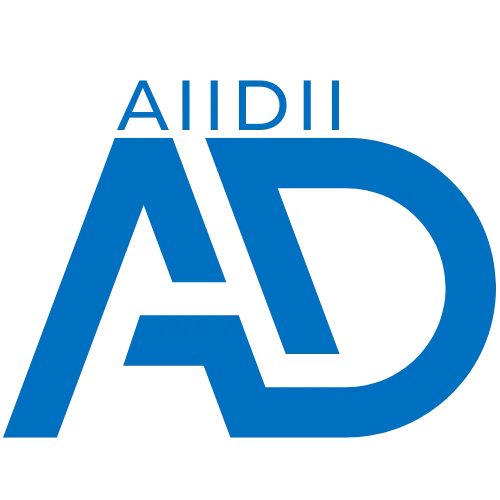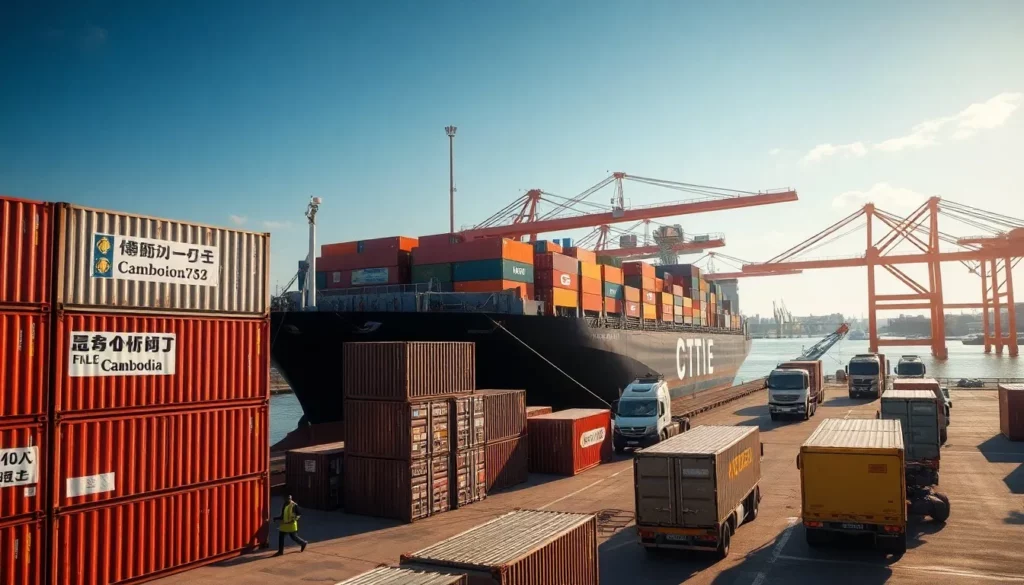Cambodia is one of Southeast Asia’s most promising emerging markets for B2B importers. As a strategic partner with China under the ASEAN framework, it offers preferential trade agreements that can lower your landed costs. This guide gives you the strategic framework to manage the China-Cambodia shipping corridor and build a reliable, profitable supply chain.
For you to succeed, choosing a reliable China-Cambodia freight forwarder is paramount. The right partner provides essential services, including customs clearance, strong carrier relationships, and transparent shipment tracking. Look for providers with proven experience in Cambodia and robust technology platforms that give you clear oversight of your shipments.
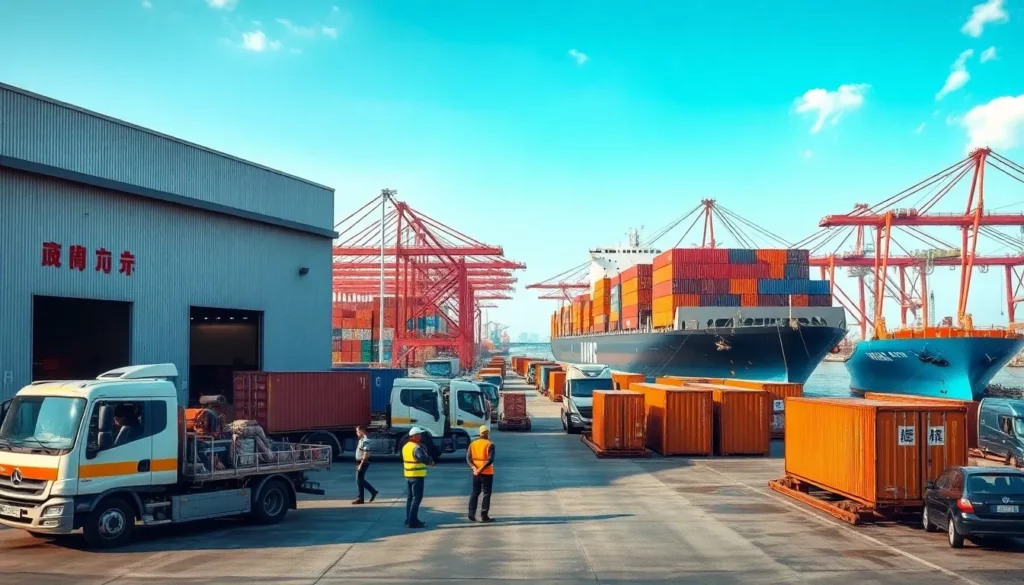
Foundational Strategy: Setting Up Your Supply Chain for Success
Aligning Your Sourcing and Shipping Strategies from Day One
Your sourcing decisions and shipping plans must work together from the very beginning. When you select a supplier, you need to look at more than just production quality; you must also assess their logistical capabilities and export experience. This integrated approach prevents expensive mistakes that can disrupt your supply chain. Incorporate shipping lead times directly into your production planning, and choose suppliers who understand international shipping and can prepare proper export documents.
The Geographic Advantage: Why Sourcing Near a Major Port Matters
Choosing suppliers located within 200 kilometers of major Chinese ports like Shenzhen, Shanghai, or Guangzhou gives you a significant logistical edge. You’ll benefit from lower inland transport costs, faster cargo consolidation, and more frequent sailing schedules, which adds flexibility to your supply chain. Coastal suppliers also offer better access to specialized services like expedited customs clearance and container loading supervision.
Best Practice: When you evaluate suppliers, factor port proximity into your total cost calculations. A supplier with a 5% higher unit cost but located near Shenzhen can offer better overall value than a more distant supplier that requires costly inland transport.
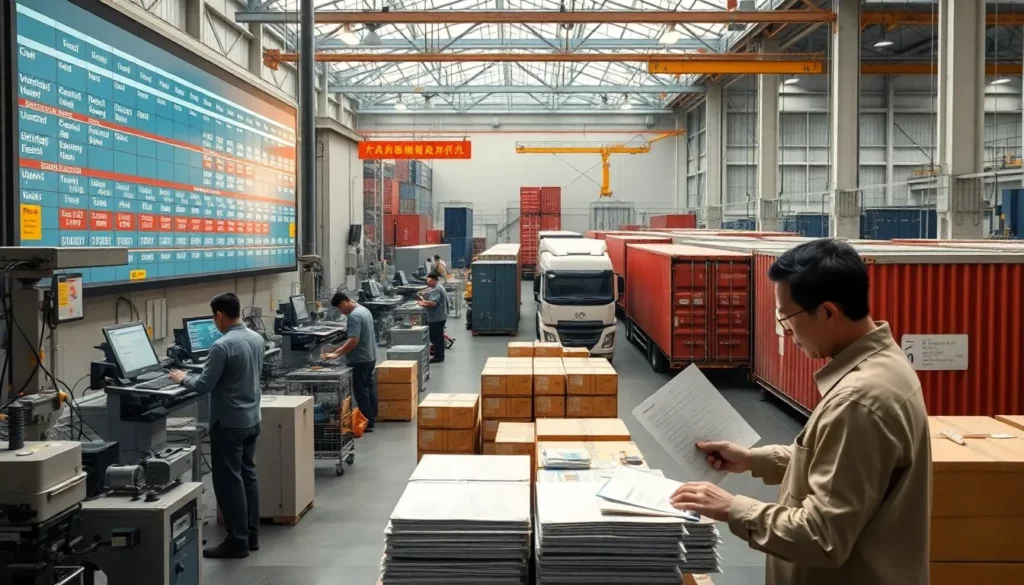
Production Timelines vs. Shipping Timelines: How to Build a Buffer
Manufacturing and shipping operate on different schedules, so you need to coordinate them carefully to avoid inventory shortages. Build a systematic buffer into your planning. Your production schedule should account for both shipping frequency and seasonal changes in carrier availability. You must plan for Chinese holidays like Chinese New Year (late January to mid-February) and Golden Week (early October), which can add 7-14 days to normal transit times.
Critical Warning: During peak shipping seasons, freight rates can jump by 50-100%, and transit times increase. Plan your production to avoid these periods, or budget for the higher shipping costs.
Early Vetting: Questions for Your Supplier About Export Experience
A supplier’s export competence has a direct impact on your shipment’s success and customs clearance speed. During your vetting process, ask pointed questions to verify their experience: How many years have you been exporting? Can you provide references from other importers in Southeast Asia? Do you have dedicated staff for export documentation? Also, request sample documents like commercial invoices and packing lists to check their accuracy. A supplier who can’t provide professional paperwork is a red flag for future customs delays.
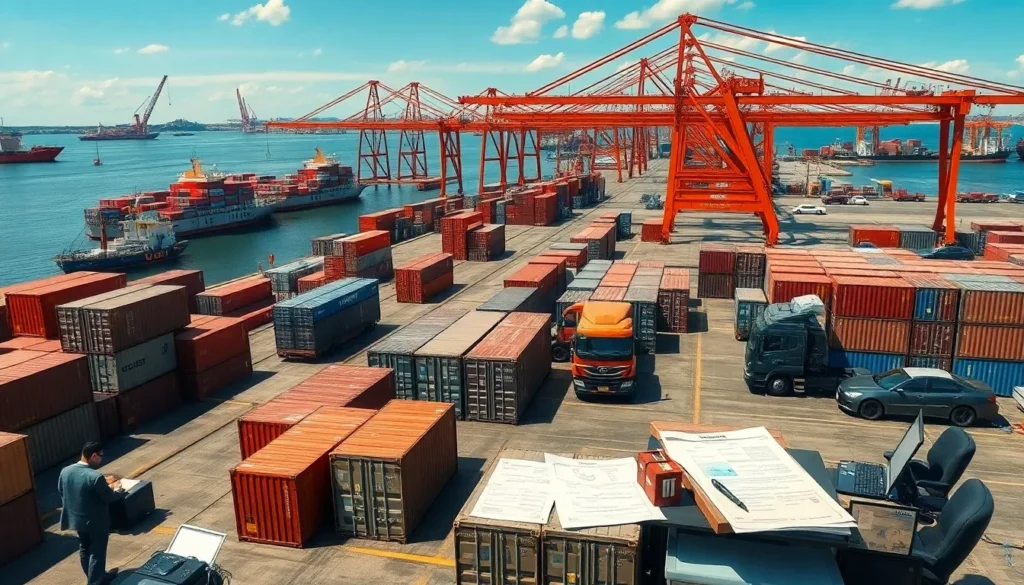
Building a Proactive Risk Management Framework
Your primary risks when shipping from China to Cambodia include transit delays, customs holds, cargo damage, and cost overruns. Transit delays, often caused by weather or port congestion, can add 3-7 days. Customs holds, usually from documentation errors, can delay cargo release by 5-15 days. Cost overruns are frequently the result of unexpected surcharges or fees not included in your initial quote.
Key Metric: Standard cargo insurance covers 110% of the declared CIF value, protecting you against physical damage. However, this coverage excludes losses from delays, so you might consider specialized insurance for time-sensitive cargo.
The Critical Role of a Freight Forwarder vs. Going Direct
A freight forwarder provides vital expertise that mitigates risk and improves efficiency. In my two decades in this field, I’ve seen countless importers save money and avoid disaster by using a forwarder. They have relationships with multiple carriers, which helps secure space during peak seasons and get you competitive rates. Going direct with a carrier might seem cheaper, but it exposes you to huge operational risks, as carriers focus on vessel operations, not customer support.
Pro Tips: Choose a freight forwarder with established offices in both China and Cambodia. This ensures they can provide hands-on support at every stage of the journey.
An Introduction to Cargo Insurance: A Non-Negotiable Expense
Cargo insurance is essential to protect your investment against loss, damage, or theft. A carrier’s liability is minimal, often capped at just $500 per container, no matter the value of your goods. Marine cargo insurance is inexpensive, typically costing 0.1-0.3% of the insured value, and provides protection against physical damage from weather, handling accidents, or theft.
Best Practice: Always opt for “all-risks” coverage over a “named perils” policy for the most comprehensive protection. Verify that your policy covers the entire journey, including inland transport in both China and Cambodia.
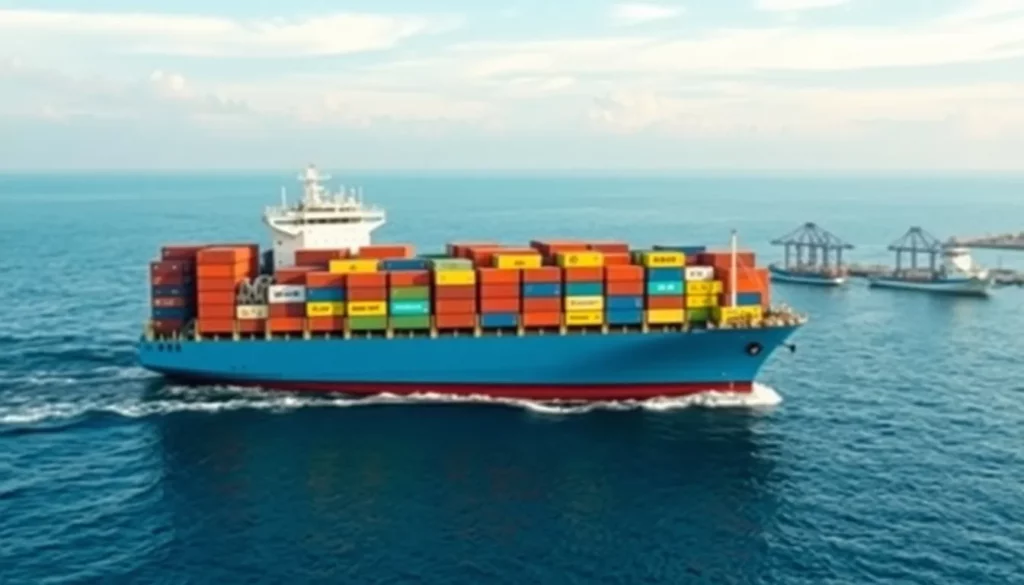
Deconstructing Your Shipping Options: Mode, Speed, and Cost
Sea Freight: The Economic Engine for High-Volume Shipments
Sea freight is the backbone of China-Cambodia trade, handling about 90% of cargo volume because of its cost-effectiveness for bulk shipments. The ocean journey from major Chinese ports to Sihanoukville, Cambodia’s only deep-water commercial port, typically takes 12-16 days. It offers the lowest per-unit cost for any shipment larger than 2 cubic meters (CBM).
Best For: Shipments over 2 CBM, non-urgent goods, and raw materials where cost-per-unit is paramount.
Sea freight delivers the best value when delivery speed is less important than cost. It’s the standard choice for manufacturing inputs, retail inventory, and industrial equipment. The immense cost savings are essential for maintaining competitive product pricing in the Cambodian market.
Example: A 40-foot container of electronics from Shenzhen to Sihanoukville costs around $400-$600. Shipping a similar volume by air would cost $15,000-$25,000. This massive difference makes sea freight the only viable option for most products.
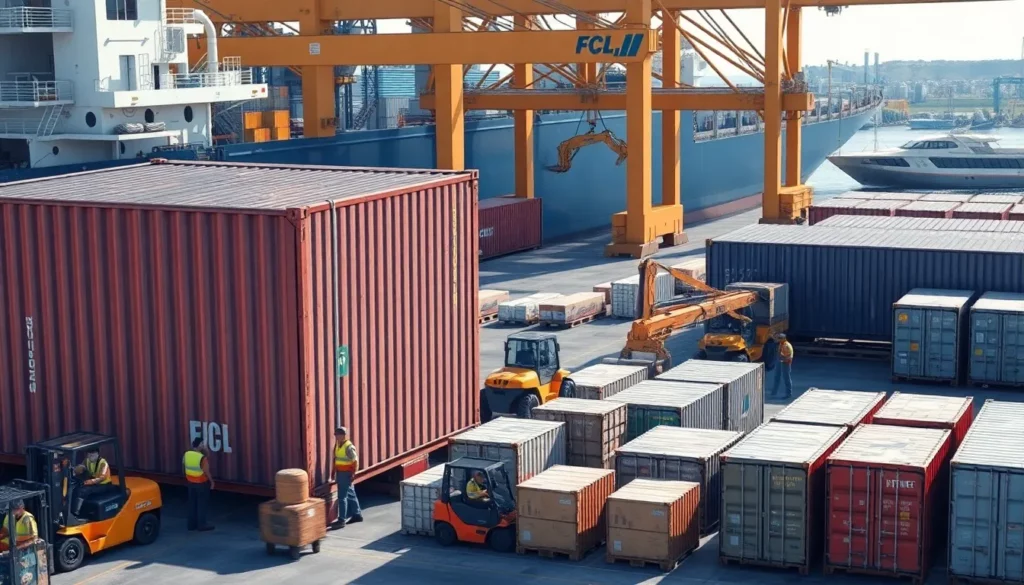
Making the Call: FCL vs. LCL
Your choice between Full Container Load (FCL) and Less than Container Load (LCL) will affect your shipping costs and schedule. The tipping point where FCL becomes more economical than LCL is typically around 13-15 CBM, but this can shift based on current market rates.
| Feature | FCL (Full Container Load) | LCL (Less than Container Load) |
| Best For | Shipments > 15 CBM | Shipments 2-13 CBM |
| Security | High (sealed container) | Moderate (shared container) |
| Speed | Faster (no consolidation) | Slower (adds 3-5 days for handling) |
| Cost Model | Flat rate per container | Per cubic meter (CBM) |
| Handling Risk | Minimal | Higher due to co-loading |
Best Practice: Book FCL if your shipment is larger than 15 CBM or if the value and sensitivity of your cargo justify the extra security. A common pitfall I’ve seen importers face is failing to consolidate. You can combine orders from multiple suppliers at the origin to meet FCL volume and gain its benefits.
Pro Tips: For LCL, typical rates for China-Cambodia routes are $70-$120 per cubic meter. Remember to factor in additional fees like consolidation, documentation, and destination handling into your total cost.
Specialized Sea Freight: Handling Non-Standard Cargo
If your cargo doesn’t fit in a standard container, you’ll need a specialized solution.
- Roll-on/roll-off (Ro-Ro): For vehicles and wheeled machinery.
- Break Bulk: For oversized items like construction equipment.
- Refrigerated (Reefer): For perishable goods, pharmaceuticals, or chemicals that need a controlled temperature.
Key Metric: Reefer containers can maintain temperatures from -25°C to +25°C, ensuring product integrity for your sensitive shipments. These specialized services usually cost 20-50% more than standard container shipping.
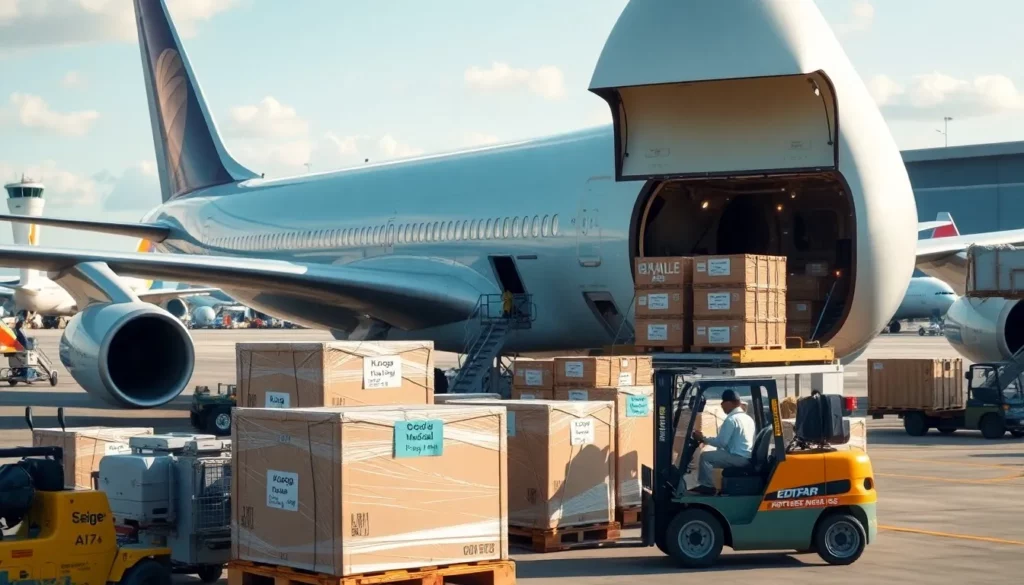
Air Freight: Your Solution for Speed and High-Value Goods
Air freight offers rapid delivery for time-sensitive or high-value shipments where speed is worth the premium cost. The flight from China to Phnom Penh is only 2-4 hours, with total door-to-door delivery typically taking 3-7 days, including customs clearance. Phnom Penh International Airport handles most of Cambodia’s air freight.
Best For: Urgent shipments < 2 CBM, high-value electronics, medical supplies, or critical samples.
Critical Warning: Air freight is significantly more expensive than sea freight, with costs on China-Cambodia routes ranging from $2-$8 per kilogram. This makes it 10-20 times more costly than ocean shipping for an equivalent weight. Make sure your product margins can support these premium rates.
Standard Air Cargo vs. Express Courier (DHL, FedEx)
| Service Level | Standard Air Cargo | Express Courier |
| Best For | Shipments > 100 kg | Urgent, smaller shipments |
| Speed | 3-5 days door-to-door | 1-3 days door-to-door |
| Cost | Cost-effective for speed | Premium (100-200% higher than standard) |
| Features | Reliable, scheduled service | Comprehensive tracking, brokerage |
Best Practice: Use standard air cargo for your regular business shipments where a 3-5 day delivery is sufficient. Reserve express courier services for true emergencies where the extra cost is justified by the urgency.
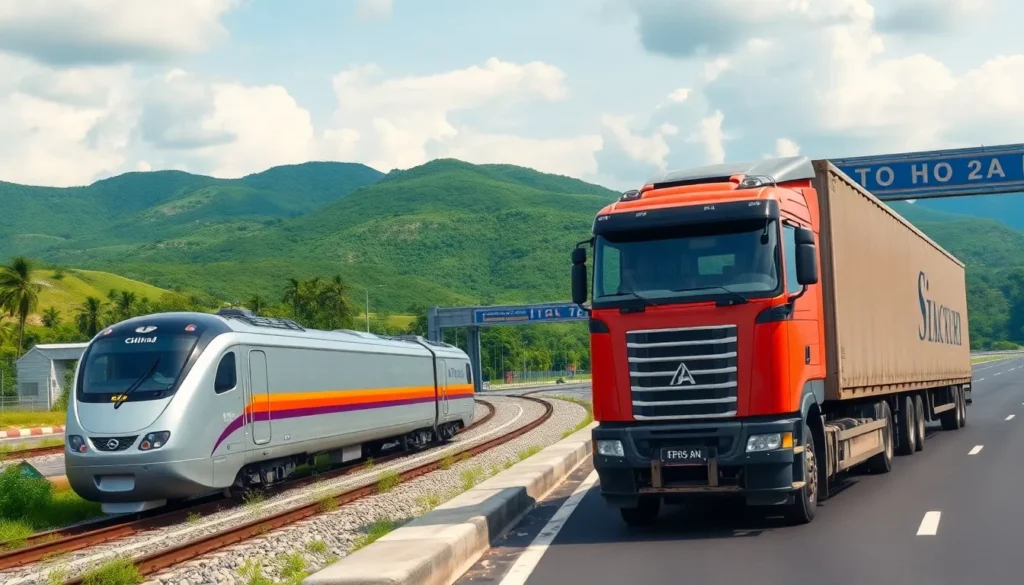
Overland Transport: Strategic Alternatives to Sea & Air
Rail Freight: The “Middle Ground” Balancing Cost and Speed
Rail freight presents a compelling middle option, delivering faster than ocean freight at a cost much lower than air. The China-Cambodia rail line, which typically passes through Vietnam and Laos, offers transit times of 5-13 days. It’s a great fit for moderately time-sensitive goods, with costs generally 30-50% lower than air freight.
Example: Rail freight from Kunming to Phnom Penh usually takes 5-7 days and costs 40-60% less than the equivalent air freight.
Cross-Border Trucking: The Fastest Option from Southern China
For shipments originating in southern China, trucking is the fastest door-to-door option, with transit times of just 3-5 days from Guangdong province to major Cambodian cities. It offers maximum scheduling flexibility and eliminates the multiple handling points required for sea or air. Border crossing procedures can add 1-2 days, and road conditions during monsoon season may affect reliability.
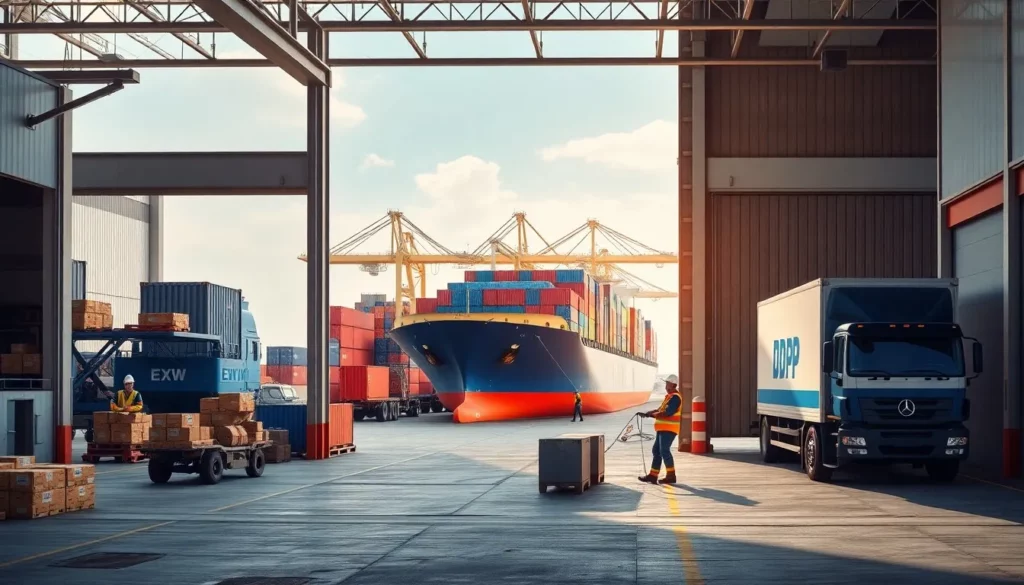
Mastering the Financials: Budgeting for Total Landed Cost
Choosing the Right Incoterm: Who Controls the Cost and Risk?
Incoterms are internationally recognized rules that define the responsibilities of sellers and buyers. Your choice of Incoterm directly affects your freight costs, insurance needs, and customs duties. Understanding your obligations under each term is vital for accurate budgeting and avoiding unexpected costs.
EXW & FOB: When You Want Maximum Control
| Incoterm | EXW (Ex Works) | FOB (Free on Board) |
| Your Responsibility | All logistics from the factory door | Logistics from the port of loading |
| Control Level | Maximum control over all costs | Control over ocean freight and carrier |
| Best For | Gaining direct relationships with forwarders | Balancing control with convenience |
Pro Tips: FOB is often the best choice when your supplier has good export processes, but you want to control the main freight leg. This allows you to leverage your own forwarder’s volume-based rates, which are often better.
CIF & DDP: The Convenience vs. Control Trade-Off
| Incoterm | CIF (Cost, Insurance, Freight) | DDP (Delivered Duty Paid) |
| Supplier’s Role | Arranges ocean freight and insurance | Arranges everything, door-to-door |
| Convenience | High | Maximum |
| Cost Control | Low | Minimal |
| Risk | Risk of hidden supplier markups | High risk of hidden markups |
Critical Warning: Suppliers frequently add 15-30% markups on freight services under CIF and DDP terms. Always compare a DDP or CIF offer to an FOB quote plus your own forwarder’s charges to see the true cost.
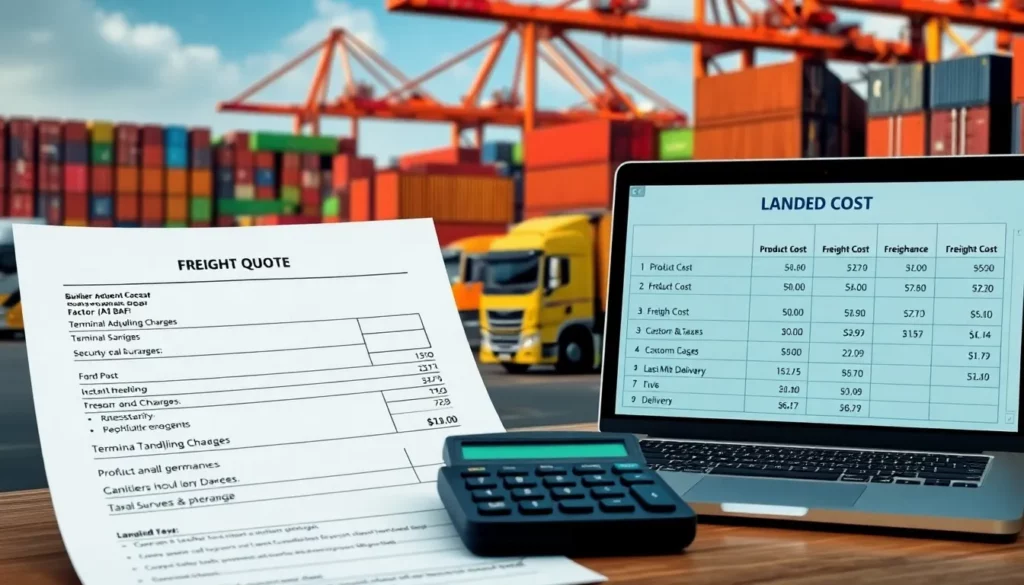
Anatomy of a Freight Quote: Decoding Every Line Item
A freight quote has many components beyond the base rate. Ocean freight quotes include items like the Bunker Adjustment Factor (BAF) for fuel price changes and Terminal Handling Charges. Air freight quotes include security and fuel surcharges. Understanding these lets you budget accurately and avoid surprises.
Key Metric: Total surcharges and ancillary fees typically add 20-40% to the basic freight rate. You must account for these in your budget.
Calculating Your True Total Landed Cost
Your landed cost is the total expense to get a product from the factory to your door. The calculation must include every cost to accurately analyze your pricing and profit margins. Logistics and customs can often add 15-35% to your product cost.
The formula is:
(Product Cost) + (Freight Cost) + (Insurance) + (Customs Duties & Taxes) + (Last-Mile Delivery) = Total Landed Cost
Best Practice: Integrate landed cost calculations into your initial supplier negotiations. This ensures the final delivered price meets your target profit margin. Also, build a 5-10% contingency into your budget for currency fluctuations and potential delays. A one-week delay can result in storage fees and lost sales that exceed the original freight cost.
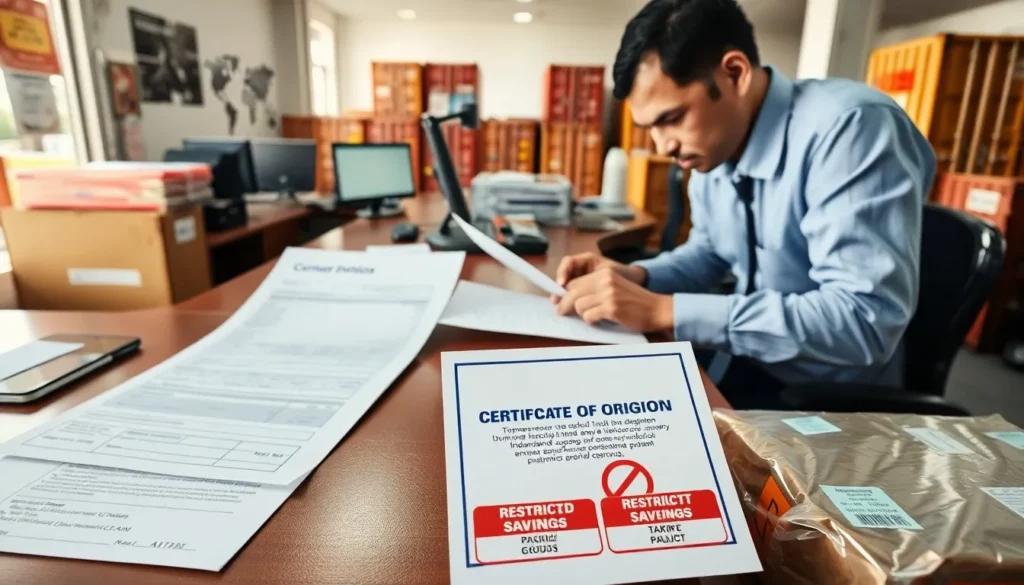
Conquering Cambodian Customs: A Guide to Compliance
The Mandatory Documentation Checklist
Proper documentation is the foundation of smooth customs clearance. Incomplete or inaccurate paperwork is the number one cause of delays and penalties.
The “Must-Haves”: Perfecting Your Core Documents
- Commercial Invoice: Must accurately detail the goods, quantities, and value. It’s the primary document for calculating duties.
- Packing List: Provides a detailed breakdown of your cargo’s contents, including weights and dimensions, used by officials for verification.
- Bill of Lading (Sea) / Air Waybill (Air): The legal title to your goods and a key tracking document. Ensure all consignee and cargo information is perfect.
Unlocking Tax Savings: The Certificate of Origin (Form E)
The ASEAN-China Free Trade Agreement offers a massive advantage. A valid Certificate of Origin (Form E) can reduce or eliminate import tariffs for over 90% of Chinese goods. This certificate must be issued by an authorized Chinese chamber of commerce and be completely free of errors.
Key Metric: Using a Form E can cut your import duties from a potential 7-35% down to zero, saving thousands of dollars on a single shipment.
Restricted Goods: Securing Import Licenses Before You Ship
Certain products require an import license from a Cambodian ministry before they can be cleared. These include food products, pharmaceuticals, chemicals, and some electronics. You must secure these permits before your shipment leaves China.
Critical Warning: Shipping restricted goods without the proper licenses will result in your cargo being detained and possibly forfeited. Always verify license requirements during the product sourcing phase.
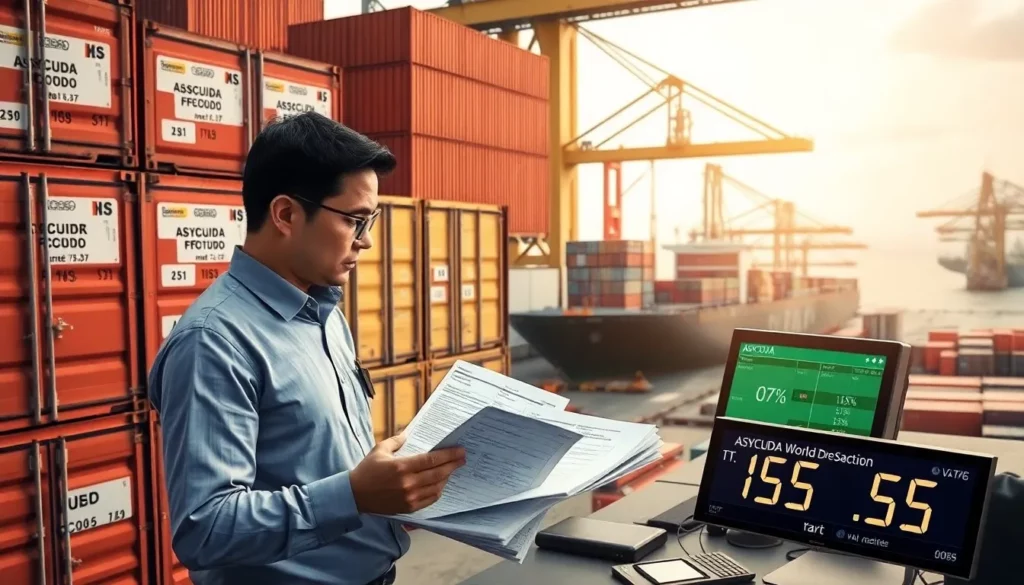
The Step-by-Step Customs Clearance Process in Cambodia
HS Code Classification: Your Responsibility
The Harmonized System (HS) code you declare determines the duty rate for your goods. Cambodia uses the 8-digit ASEAN Harmonized Tariff Nomenclature (AHTN). Incorrect classification can lead to penalties and delays. Duty rates vary widely: 7% for raw materials, 15% for capital goods, and up to 35% for finished products.
Lodging the Declaration and Calculating Duties & Taxes
Cambodia uses the ASYCUDA World system for electronic customs declarations. The system calculates duties based on the CIF (Cost, Insurance, Freight) value of your goods. Import duty is applied first, and then a 10% Value Added Tax (VAT) is applied to the total sum (CIF value + duty).
Example: For a shipment with a $10,000 CIF value and a 15% duty rate, the total customs charges would be $2,650 ($1,500 in duty + $1,150 in VAT).
Navigating a Physical Customs Inspection
Customs inspects 15-25% of all shipments based on risk criteria. First-time importers and certain high-risk products face a higher chance of inspection, which typically adds 1-3 days to the clearance process. Accurate documents and cooperation with officials are the best ways to speed this up.
Pro Tips: Keep detailed product specifications and even samples on hand to provide to customs officials if requested. A cooperative attitude goes a long way.
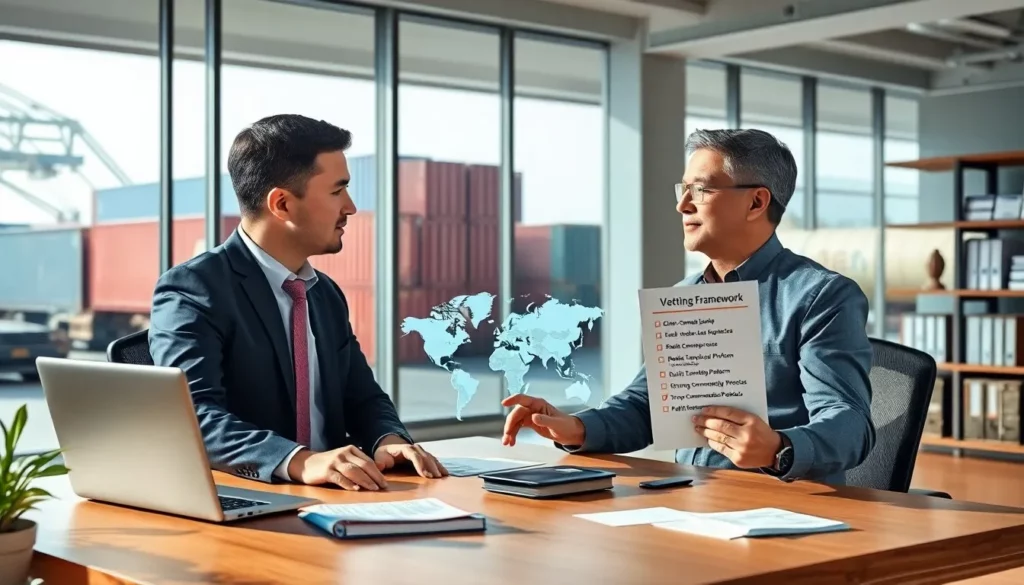
How to Select and Qualify Your Freight Forwarding Partner
Defining Your Requirements: What Do You Actually Need?
First, decide on the scope of services you need. Do you just need someone to arrange freight, or do you need a full-service partner for customs, warehousing, and final delivery? A comprehensive partnership simplifies management and improves coordination, though it may cost more upfront.
Best Practice: For your first few shipments to Cambodia, I recommend starting with a full-service partner. You can then fine-tune the service level as you gain experience.
The Vetting Framework: From a Long List to a Shortlist
Criterion 1: Verifiable China-Cambodia Lane Expertise
Choose a forwarder with specific, verifiable experience on the China-Cambodia trade lane. They will understand the unique regulatory landscape and have the local relationships general providers lack. A local office presence in both countries is a strong indicator of capability, as it allows for hands-on management when issues arise.
Criterion 2: Robust Technology Platform
Modern freight management systems that provide real-time tracking, document sharing, and automated updates are no longer a “nice-to-have”—they are essential. Their platform should allow you to book shipments, upload documents, and monitor progress easily.
Key Metric: Top forwarders provide tracking updates within 24 hours of a status change and maintain near-perfect system uptime.
Criterion 3: Strong Communication Protocols
Clear communication is vital. During the selection process, establish expectations for update frequency and how problems will be escalated. A dedicated account manager who knows your business is far better than a generic customer service line.
Making the Final Decision
When you compare quotes, look beyond the price. Analyze the service levels and what is included. An extremely low quote often signals hidden fees or service gaps that will cost you more in the end. Assess their risk management capabilities, including their cargo insurance options and problem-resolution procedures. Finally, check their references. Speaking to other clients is the best way to get an authentic view of their service quality.
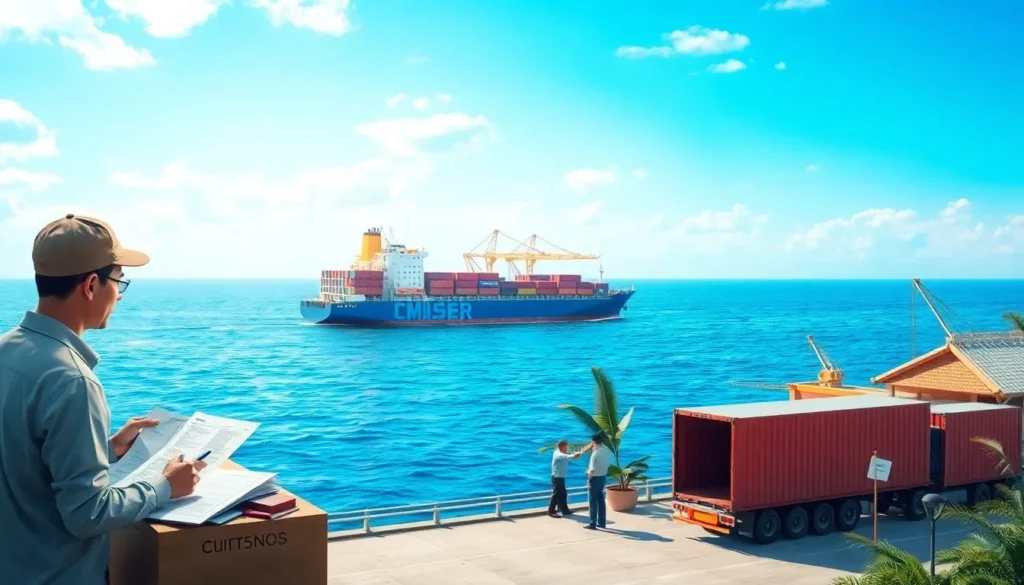
The China-to-Cambodia Shipment Journey: An Actionable Walkthrough
Phase 1: Pre-Shipment (China)
- Finalize Order and Incoterms: Confirm all product specifications, delivery schedules, and documentation requirements with your supplier.
- Engage Forwarder and Book Shipment: Contact your forwarder 7-14 days before your cargo is ready. Provide detailed information: weight, dimensions, commodity type, and any special handling needs.
- Coordinate Pickup and Export Clearance: Your forwarder will manage the pickup from the factory, container loading, and export customs clearance in China.
Phase 2: In-Transit
- Receive and Verify Bill of Lading/Air Waybill: As soon as you receive this legal document, check it for any errors. Discrepancies can prevent your cargo from being released at the destination.
- Monitor Real-Time Tracking: Use your forwarder’s portal to track the shipment’s progress.
Pro Tips: Set up automated alerts for key milestones like departure, arrival, and any exceptions that require your attention.
Phase 3: Post-Arrival (Cambodia)
- Handle Pre-Arrival Customs Declaration: Your forwarder should submit the customs declaration and arrange duty payments while the cargo is still in transit to speed up release.
- Manage Customs Clearance on Arrival: The forwarder’s local team will manage the clearance process, which typically takes 1-3 business days.
- Arrange Final Inland Transport: Once cleared, your forwarder will coordinate the final truck delivery to your specified location and provide proof of delivery.
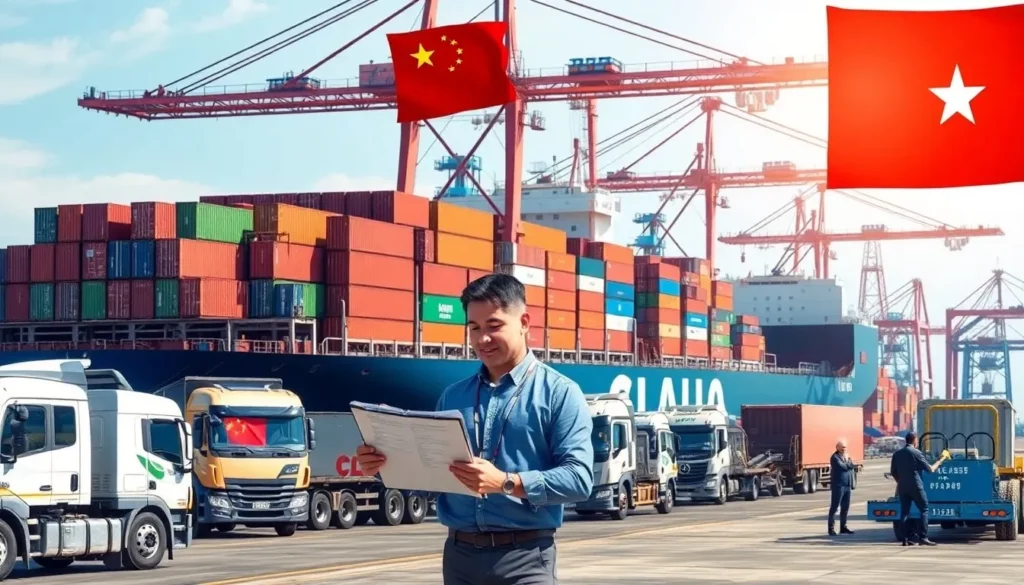
Conclusion
Successfully shipping from China to Cambodia hinges on smart planning, diligent partner selection, and close attention to regulations. By using the frameworks in this guide, you can create a reliable and cost-effective supply chain. The key is to balance speed, cost, and risk by working with an experienced logistics partner who understands the unique demands of this vital trade route.
Frequently Asked Questions (FAQs)
1. What is the cost difference between FOB and DDP Incoterms?
Choosing FOB can result in 15-25% lower landed costs compared to DDP. With FOB, you control the freight selection and can secure competitive rates. Suppliers using DDP often add significant markups to cover their logistics management.
2. How can I verify my Chinese supplier’s export documents?
Request sample documents like the commercial invoice and packing list during your vetting process. You can also verify their export license and track record. For your first order, have your freight forwarder conduct a pre-shipment documentation review to catch any errors.
3. What are the main reasons for customs delays in Cambodia?
Documentation errors are the primary cause, accounting for most delays. This includes incorrect HS codes, incomplete invoices, or value discrepancies. An experienced freight forwarder mitigates this by pre-clearing documents and leveraging their relationships with local customs officials.
4. For a small, urgent shipment, is air freight always better than LCL?
It depends on the value of speed for that specific shipment. For cargo under 200 kg, air freight often provides better total value if the delivery is time-sensitive. Calculate the business cost of a delay—if lost sales from waiting for LCL outweigh the air freight premium, then flying it is the right call.
5. What information must I give a forwarder for an accurate quote?
Provide exact cargo weight and dimensions, a detailed commodity description, and origin/destination addresses. Also specify your desired Incoterm, insurance needs, any special handling requirements, and your supplier’s contact information for coordination.
